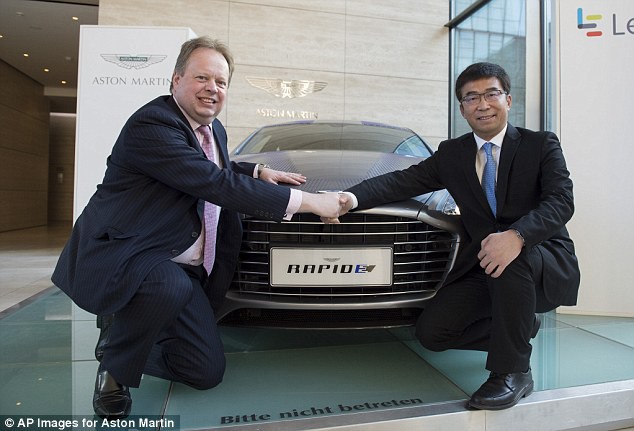BRITISH SPORTS CAR MAKER WILL WORK WITH CHINESE TECH COMPANY TO DEVELOP AN ELECTRIC CAR TO RIVAL THE TESLA MODEL S
Aston Martin has announced a partnership with Chinese technology company LeEco to develop an electric version of the four-door Aston Martin Rapide.
LeEco and Aston Martin previously worked together to produce a new internet-connected touchscreen entertainment system for the car.
However, their latest Memorandum of Understanding is designed to turn the all-electric RapidE concept that Aston Martin showed last October into a production model.
The RapidE would be a rival to the Tesla Model S, and the plan is to put it on sale in late 2017 as a way for Aston Martin to reduce the CO2 emissions of its range.
In the past Aston Martin has used the Cygnet, a small city car based on a Toyota, to achieve this, but current CEO Andy Palmer believes that a flagship electric model would make more sense.
“On my watch we are never going to put a diesel engine in an Aston,” Palmer said, “And I don’t think the Cygnet was the right thing to do. I think a car that sits squarely above the Tesla would be much more interesting. Most people who buy Teslas are buying fully loaded ones, which implies there’s room for that.”
A former Nissan executive, Palmer has experience with launching electric cars such as the Leaf.
“I’m a great advocate of electric vehicles, not for fuel economy, but for performance.”

Indeed, the RapidE concept produced 745kW, compared with the 380kW of the standard, 6-litre V12-engined car.
In addition, to the RapidE, Aston Martin will soon introduce a DB11 GT car to replace today’s DB9. The DB11 will be powered by a new 5.2-litre twin-turbo V12 and is set to be unveiled on March 2 at the Geneva motor show.
New versions of the Vantage and Vanquish are also planned, and Palmer has confirmed that there will be a hybrid four-door model along the lines of the DBX SUV that was shown at last year’s Geneva show.
The final element of Palmer’s plan is an extension of the Lagonda luxury brand, which Aston Martin revived last year. Originally intended only for the Middle East, the limited run of 200 Lagondas has since been made available worldwide which, according to Palmer, “sets the platform for bringing back Lagonda properly later on”.
Key to the success of Lagonda, he said, will be driver-assistance technologies. “It’s the hardest car to engineer because with that class of car you’re competing with Rolls-Royce and Bentley and they both sit on very sophisticated platforms.
“We now take technology from Mercedes [the German company is a small shareholder in Aston Martin] and that gives us access to many of their sophisticated systems such as lane keeping assist, plus radar front and rear, which we don’t have.”
Does this mean we are heading towards self-driving technology on an Aston Martin?
“No,” Palmer said. “I see some things, for example, self-park, being quite useful on an Aston because visibility is a little challenging. But things like lane-keeping assistance and distance control tend to take away from what the customer wants.”
-Telegraph Group Ltd




